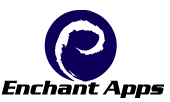Since Oracle released Oracle Unified Method (OUM), it has been working on it and evolving to realize the vision of supporting the entire Enterprise IT Lifecycle, and every Oracle product. OUM provides Guidelines, Templates, and Tailored Work Breakdown Structure.
As you may know, OUM replaces the Legacy Methods, such as AIM Advantage, AIM for Business Flows, EMM Advantage, PeopleSoft’s Compass, and Siebel’s Results Roadmap.
The Oracle® Unified Method (OUM) is Oracle’s standards-based method that enables the entire Enterprise Information Technology (IT) lifecycle. Oracle’s Global Methods team has packaged OUM to accelerate your IT projects. OUM presents an organized, yet flexible, approach. Its defined, operational framework helps anticipate critical project needs and dependencies. With OUM, you can move efficiently through the IT lifecycle to quickly realize measurable business results.
OUM provides a business focused implementation approach that is rapid and broadly adaptive. OUM also includes a comprehensive project management (PM) framework and other aspects supporting Oracle’s focus on enterprise-level IT strategy, architecture, and governance.

This latest release of OUM – release 6.3 provides support for Application Implementation, Cloud Application Services Implementation, and Software Upgrade projects as well as the complete range of technology projects including detailed techniques and tool guidance for:
- Business Intelligence (BI)
- Enterprise Performance Management (EPM)
- Enterprise Security
- WebCenter
- Service-Oriented Architecture (SOA)
- Application Integration Architecture (AIA)
- Business Process Management (BPM)
- Enterprise Integration
- Custom Software.
- Supplemental guide related to Oracle Tutor and UPK
In this OUM 6.3 release, you will find:
- OUM Cloud Application Services Implementation Approach to the Application Implementation Method (AIM) Mapping
- OUM Project Workplan, available in Primavera format, includes Tasks from OUM’s Manage and Implement Focus Area
- RACI – Responsibility Assignment Technique, Template, and Examples
- Document Application Configuration Changes [MC.055] Task and Template
- Top-Level Business Capabilities Diagram [EA.040] Template and Capability Analysis Results Presentation [EA.040] Template
- Maturity Analysis Presentation [ER.015] Template
- Access to Oracle Managed Cloud Services (OMCS) Implementation Training to Aid Project Managers Interfacing with OMCS
- Updated / Enhanced:
- OUM Cloud Application Services Implementation Approach Guidance and Templates updated based on Field Input
- Template Functionality and Format revised based on Field Requests, specifically removed Oracle Method Template Engine (OMTE) and converted to Microsoft Office 2007 format
- Template User’s Guide revised to address Template Functionality and Format revisions such as Changing Variables, Updating Field Codes, and Removing Yellow Notes
- OUM Microsoft Project Workplan updated to include Document Application Configuration Changes [MC.055] Task and Activity Filter, converted to MS Project 2007 format, and removed reliance on OUM-specific Microsoft Project Template [Global.mpt]
- OUM Microsoft Project Workplan User’s Guide updated to reflect changes to OUM Microsoft Project Workplan
- Project Management Framework supporting Tasks and Templates updated based on Subject Matter Experts Feedback
- For a comprehensive list of features and enhancements, refer to the “What’s New” page of the Method Pack
Upcoming releases will provide expanded support for Oracle’s Enterprise Application suites including product-suite specific materials and guidance for tailoring OUM to support various project types.
OUM is iterative, it is scalable, and it supports implementation of every size including staff augmentations, agile implementations, projects small to large and programs. In order to make the best use of OUM, you should scale it to fit your implementation.
Recommended approach for scaling OUM is in simple 5 steps:
- Review OUM Core Workflow
- Develop your workplan from a core set of OUM tasks
- Add tasks to your workplan as you identify scope and risk
- Consider the depth to which your project team will execute specific tasks during iterations
- Consider whether it is advisable to combine tasks or work products, or execute at activity level
OUM is Oracle’s full lifecycle method for deploying Oracle based busines solutions. Remember – Don’t serve the method. Make it serve you!
